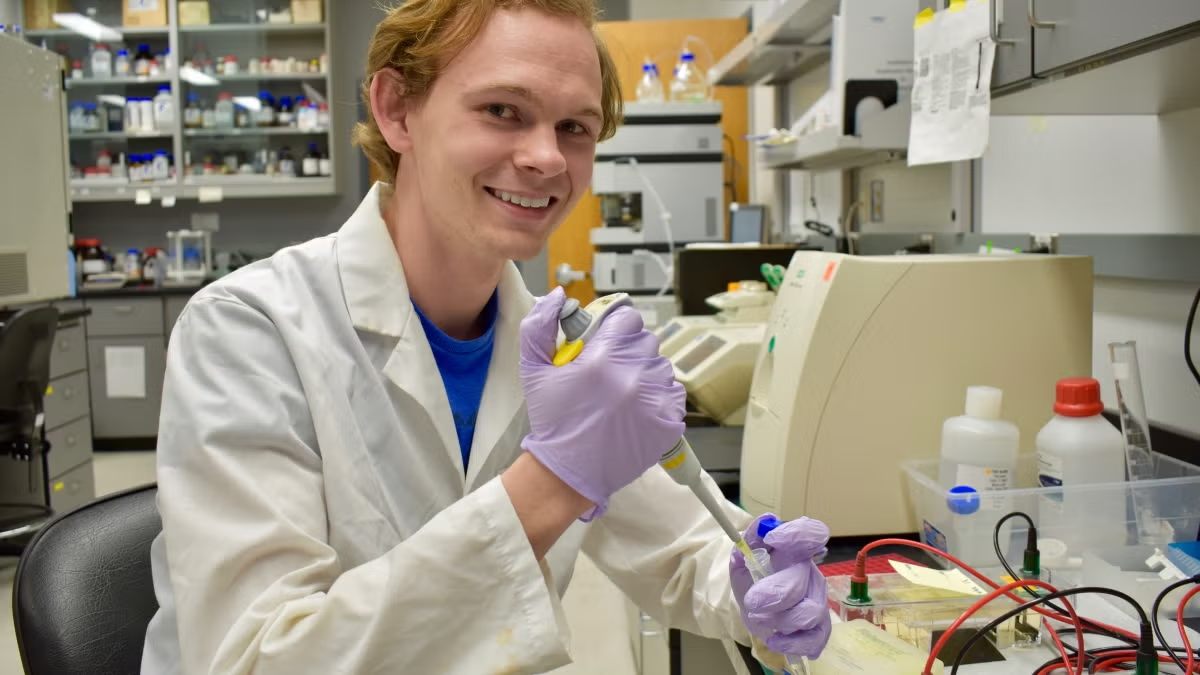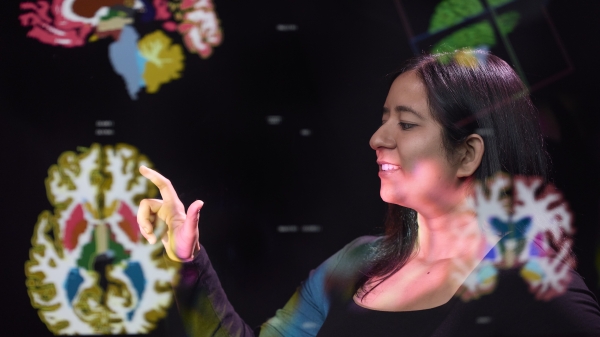Molecular biosciences and biotechnology grad discovers passion for research

Aidan Schneider is graduating from ASU with a dual major in molecular biosciences and biotechnology and finance. After finding his niche in research, Schneider is looking to start a PhD program and launch a career in research. Photo: Aidan Schneider
Editor’s note: This is part of a series of profiles for fall 2018 commencement. Read about more graduates.
When Aidan Schneider moved from Flagstaff to Tempe to attend Arizona State University, he knew he wanted to study both science and business. What he didn’t know is how quickly he would discover a deep passion for research and also find an entrepreneurial spirit in the lab.
Schneider, graduating with a dual major in molecular biosciences and biotechnology and finance, started working in a basic science lab at the School of Life Sciences. He initially majored in biological sciences, but after taking a course on microbes, he changed his science major and dove in headfirst to focus on working in a lab.
He enjoyed it so much, he found it difficult to focus on school work, because he wanted to spend most of his time doing research. After graduation, Schneider plans to earn his doctorate and launch a career working in — you guessed it — research!
Question: What was your “aha” moment, when you realized you wanted to study the field you majored in?
Answer: I started at ASU studying business management and biological sciences with some thought of using the two together in an administrative or business leadership role. My first exposure to research was in Professor Kevin McGraw’s lab at ASU's School of Life Sciences, which studies animal coloration from an evolutionary perspective. While it was interesting, I couldn’t see myself working in basic science long-term, and craved something more applied.
I took a class from Assistant Professor Xuan Wang on using microbes as cellular factories for the production of industrial chemicals from agricultural waste. I was hooked. I joined his lab as an undergraduate researcher and changed my science major to molecular biosciences and biotechnology.
Q: What’s something you learned while at ASU — in the classroom or otherwise — that surprised you or changed your perspective?
A: When I started at ASU, I thought research was an entirely basic, knowledge-generating effort. However, through work in Xuan’s lab and my courses in biotechnology, I learned it can be a very applied and even entrepreneurial pursuit. Our small tight-knit lab was kind of like a startup business. Although we tried to elucidate fundamental characteristics of microbes we also engineered them with hopes to disrupt petroleum-based chemical production.
Q: Which professor taught you the most important lesson while at ASU?
A: Xuan taught me that nobody has all the answers, even to a question which seems very small from the outside. For almost a year of my undergraduate, I worked abroad with computational biology researchers at the University of Manchester and the French Agriculture Research Institute (INRA). This interdisciplinary computational approach allowed us to overcome a significant bottleneck of our laboratory research.
Q: What’s the best piece of advice you’d give to those still in school?
A: There’s a concept in business called the sunk cost fallacy. In order to not recognize loss, most people will continue to fight a hopeless battle. You should chase exciting dreams, and if an experience isn’t fulfilling, you should abandon it and start over somewhere else. I worked in financial modeling during my underclassman years, but I gave it up to focus fully on research. I would discourage students from re-investing into something that doesn’t fulfill them — even if it’s a conventionally good choice. To some extent, at this stage, it’s too early to hedge your career direction.
Q: What was your favorite spot on campus, whether for studying, meeting friends or just thinking about life?
A: The lab. It’s not surprising research has become my direction, given I’ve been in the lab nearly full-time for over three years.
Q: What are your plans after graduation?
A: I’m currently applying to PhD programs at ASU and elsewhere related to computational biology and biotechnology. In my PhD, I intend to continue researching metabolism in some respect. While waiting to hear back on applications, I’ll be working in Xuan’s lab as a part-time paid technician and perhaps doing some traveling.
Q: If someone gave you $40 million to solve one problem on our planet, what would you tackle?
A: I’d identify novel microbes which can live alongside highly toxic wastes. I would develop the molecular and computational tools to engineer these organisms to convert these toxic wastes into valuable products.
Q: Describe some challenges you faced while earning your degree, and what you did to overcome them.
A: One of my major challenges was balancing my schoolwork and my work in the lab, which I found much more fulfilling. I resolved this imbalance by setting long-term goals (an impactful career in research), working them back to the prerequisite mid-range goals (getting into a good graduate school), and short-term goals (get good grades).
Q: What’s something you are most proud of during your time at ASU?
A: I’m proud to have contributed to multiple upcoming publications in a variety of ways. I don’t think I ever settled into a particular role with my research and seemed to learn a new skill with each contribution. I’m proud that I was able to learn by working on something meaningful to myself and others.
More Science and technology

Podcast explores the future in a rapidly evolving world
What will it mean to be human in the future? Who owns data and who owns us? Can machines think?These are some of the questions…

New NIH-funded program will train ASU students for the future of AI-powered medicine
The medical sector is increasingly exploring the use of artificial intelligence, or AI, to make health care more affordable and…

Cosmic clues: Metal-poor regions unveil potential method for galaxy growth
For decades, astronomers have analyzed data from space and ground telescopes to learn more about galaxies in the universe.…